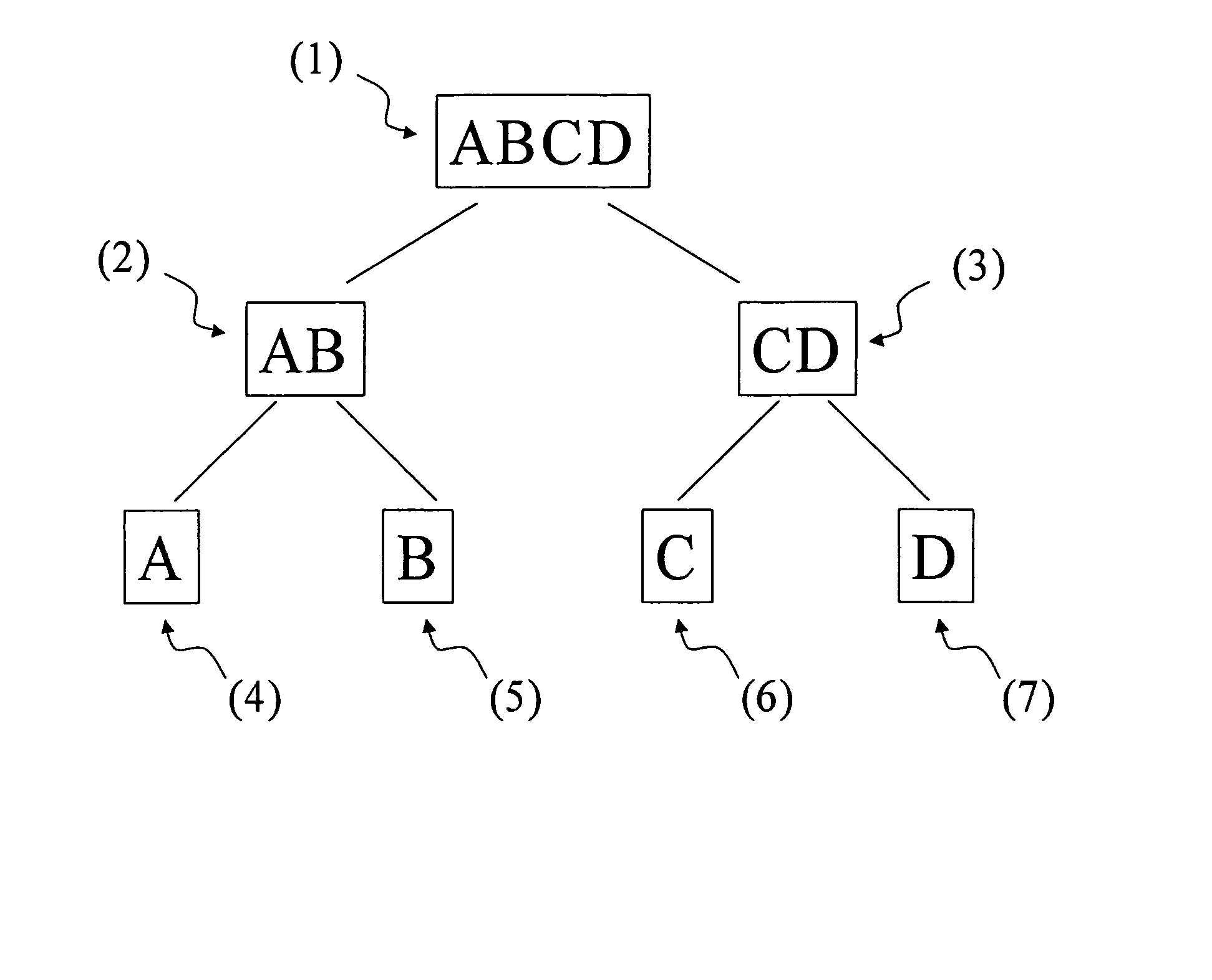Prediction of Breast Cancer Response to Taxane-Based Chemotherapy
- Summary
- Abstract
- Description
- Claims
- Application Information
AI Technical Summary
Benefits of technology
Problems solved by technology
Method used
Image
Examples
example 1
Patient Selection, RNA Isolation from Tumour Tissue Biopsies and Gene Expression Measurement Utilizing HG-U133A Arrays of Affymetrix
[0114]Samples of primary breast carcinomas were available from 57 chemotherapy-naïve patients with operable (T2-3, N0-2) or locally advanced (T4a-d, N0-3) breast cancer were first treated with 2 cycles of TAC (docetaxel 75 mg / m2, doxorubicin 50 mg / m2, cyclophosphamide 500 mg / m2 Day 1, 3 weeks). All tumour samples were collected as needle biopsies of primary tumours prior to any treatment. The biopsies were obtained under local anaesthesia using Bardg MAGNUM™ Biopsy Instrument (C. R. Bard, Inc., Covington, US) with Bard® Magnum biopsy needles (BIP GmbH, Tuerkenfeld, Germany) following ultrasound guidance.
[0115]Total RNA was isolated from snap frozen breast tumour tissue biopsies. The tissue was crushed in liquid nitrogen, RLT-Buffer (QIAGEN, Hilden, Germany) was added and the homogenate spun through a QIAshredder column (QIAGEN, Hilden, Germany). From th...
example 2
Classification of Breast Tumour Tissues into Taxane Response Classes
[0117]For the separation of the aggregate breast cancer response classes AB and CD from ABCD (cf. FIG. 1) one of the following partial classifiers is used:[0118]1. A majority voting scheme based on the expression level of ESR1 (Affymetrix Probeset ID 205225_at) and the expression values for the gene WARS (Affymetrix Probeset IDs 200628_s_at and 200629_at). Values of the ESR1 expression greater than 780 are considered a vote for aggregate breast cancer response class AB, values lower than the given threshold values are considered a vote for aggregate breast cancer response class CD. For the two WARS probeset IDs, the first is compared to 1060. Values less than this threshold are considered a vore a aggregate breast cancer response class AB, otherwise for CD. For the second probeset ID for WARS, values less than 1294 are considered a vote for aggregate breast cancer response class AB, otherwise for CD. The number of v...
example 3
Significance of Correlated Marker Genes
[0141]It is well known that expression level data of multiple genes can be highly redundant information, due to co-regulation of certain genes or groups of genes in living organisms.
[0142]According to the invention, a so-called “correlation coefficient” is used as a measure for the degree of similarity of expression levels in multiple samples which corresponds to the degree of similarity of the information contained in these genes. If we denote the log expression value of the i-th gene (i=1, 2, 3, . . . N) of patient j (i=1, 2, 3, . . . M) by gi j, the correlation coefficient r may be defined as
ri1,i2:=∑j=1M(gi1,j-g_i1)·(gi2,j-g_i2)(∑j=1M(gi1,j-g_i1)2)·(∑j=1M(gi2,j-g_i2)2)
where the mean value of gene i is given by
g_i:=1M∑j=1Mgi,j.
[0143]r is also called “Pearson Correlation Coefficient” and is widely used in the statistical community.
[0144]While r may take any value between (and including) −1 and 1, correlations with an absolute value close to 1...
PUM
| Property | Measurement | Unit |
|---|---|---|
| Fraction | aaaaa | aaaaa |
| Capacitance | aaaaa | aaaaa |
| Capacitance | aaaaa | aaaaa |
Abstract
Description
Claims
Application Information
 Login to View More
Login to View More - R&D
- Intellectual Property
- Life Sciences
- Materials
- Tech Scout
- Unparalleled Data Quality
- Higher Quality Content
- 60% Fewer Hallucinations
Browse by: Latest US Patents, China's latest patents, Technical Efficacy Thesaurus, Application Domain, Technology Topic, Popular Technical Reports.
© 2025 PatSnap. All rights reserved.Legal|Privacy policy|Modern Slavery Act Transparency Statement|Sitemap|About US| Contact US: help@patsnap.com



